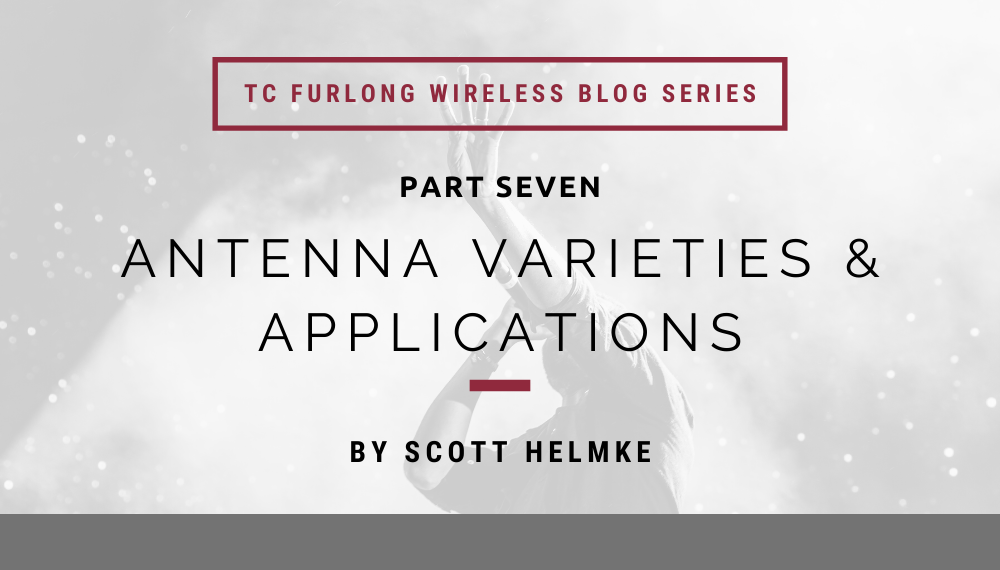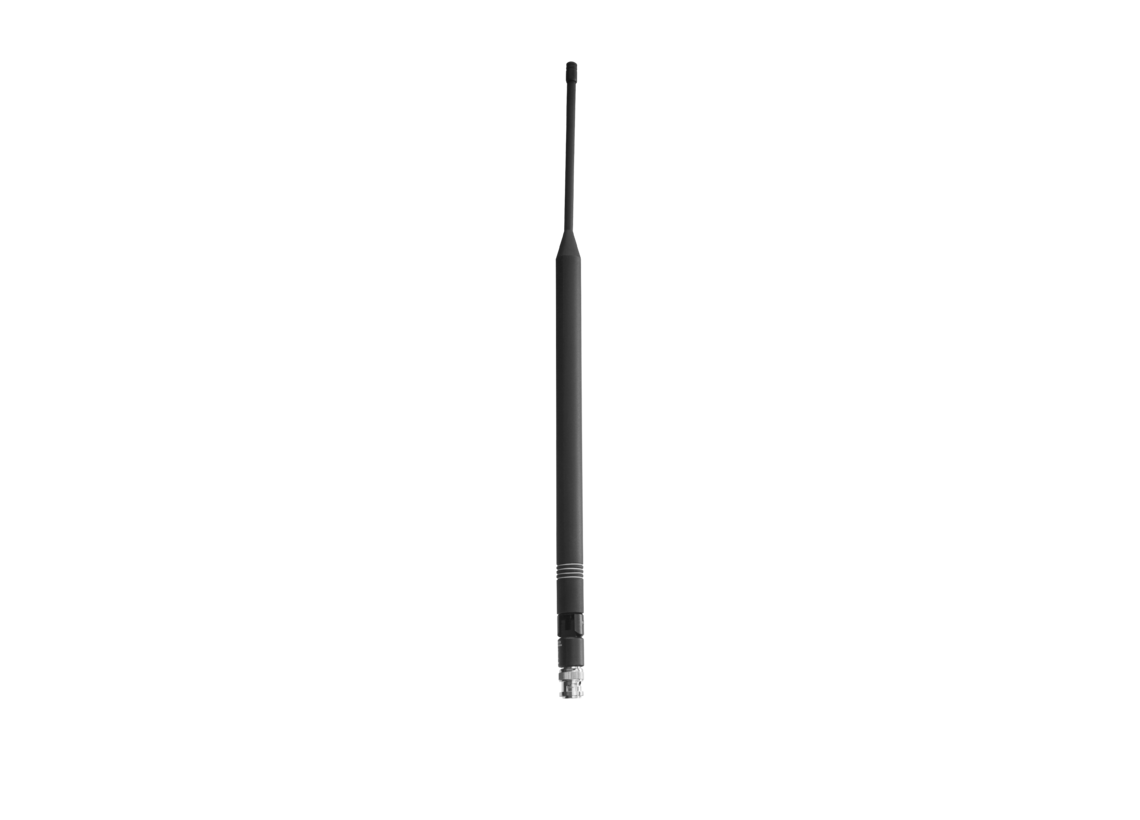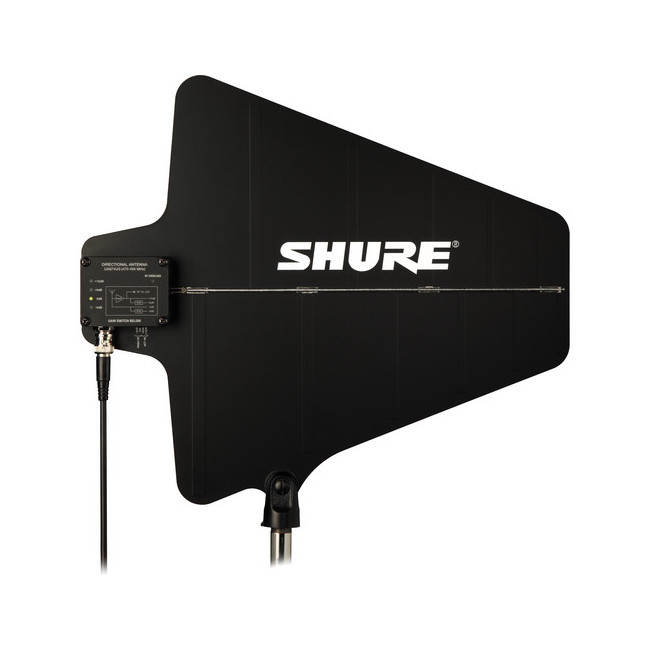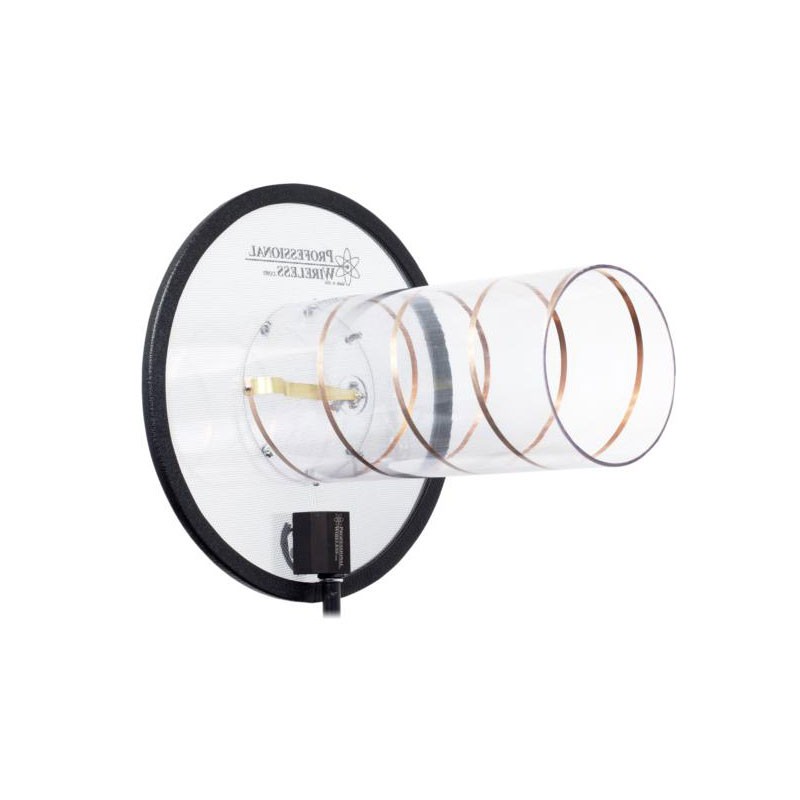
by Scott Helmke
This blog post is the sixth entry in an ongoing series all about wireless systems – background info, best practices, and useful tips & tricks. Click here to get caught up on the previous articles.
This is the seventh blog article in our wireless series. In the previous article I wrote about using antenna distribution to clean up both your RF performance and also your wireless rack. In this article I’ll be writing about some better choices in antennas.
Omnidirectional Antennas
The antennas that most people use are, no surprise, the ones that came bundled with the system. Often referred to as “whips”, these antennas might be rather primitive bits of wire and plastic, but the nicer ones might actually be pretty good. The antennas Shure bundles with their better quality systems such as QLXD and beyond fit the generic “whip” name but are technically “center fed ½ wave dipole” antennas. If you were to cut one open you’d find more than just a length of wire. The “half wave” part of that name is important, as antennas work best when they are the same length as one of the RF waves coming from the microphone. That ends up being a little on the large side, so often a good compromise is to go with a half or a quarter of the wavelength. The cheapest antennas are usually just a quarter wave long. But the important thing to take from this is that the antenna needs to be designed for the frequency band that your microphone uses. While an antenna of the wrong length will still work in many cases, having the right length works best. More advanced antennas will be designed to work well over wider frequency ranges, but it is always something you should keep in mind especially when considering antennas to feed several different frequency bands through antenna distribution systems.

The most important specification about antennas, after the frequency range, is the directional pickup pattern. The whip-style antennas that come bundled with wireless systems are usually referred to as “omnidirectional”, meaning that they pick up equally well from all directions. This isn’t entirely true, as the directional pattern is more like a torus or donut shape. These antennas pick up best from the side rather than the end of the antenna. Don’t point the tips of your antennas at the stage, in other words.
Directional Antennas
The antenna you will see being used in most professional systems is the log-periodic directional antenna, most often referred to as a “paddle” or “shark fin” antenna. These antennas pick up best from one direction, and less from the other directions. By concentrating the pick up pattern in one direction these antennas can usually pick up microphone signals from longer distances than omnidirectional antennas. This also means that the antennas need to be in a location where they can be aimed at where the microphones are being used, such as from the side of a stage or from the front of house location.

The most advanced antennas found in regular use are the “helical” antennas, or more properly “helically polarized” or “circularly polarized” antennas. Like the log-periodic paddle antennas these have a directional pickup pattern, but they also feature a different antenna polarization. Most antennas, including whip and paddle antennas, have “linear” polarization. Put very briefly, RF waves have a particular polarization direction, and the system works best if the transmitting antenna (on the microphone) is oriented in the same direction as the receiving antenna. A microphone held vertically will work best with a receiver antenna mounted vertically, but a microphone held horizontally will not be picked up very well by a vertical receiving antenna. If you are using a receiver with two “diversity” antennas, you can put the antennas at different angles to cover any possible angle that the transmitter might be held at. A helically polarized antenna does not have a polarization angle at all, meaning that it will pick up equally well no matter what angle the microphone is held at. These antennas are most often used with in-ear monitoring (IEM) systems because the receiving beltpacks rarely have diversity antennas – with only one receiving antenna you want the best transmitting antenna possible.

Antenna Amplifiers
Some antennas have built-in amplifiers to boost the signal strength. This feature is not meant for picking up distant or weak microphone signals, though. It’s really only meant to compensate for long antenna cable runs back to the receiver. An antenna amplifier can overload on strong signals, as well as adding its own noise to the signal. My usual rule of thumb is to avoid antenna amplifiers unless I’m running at least 50 or 100 feet of antenna cable.
Choosing The Right Antennas
Which antenna should you use? It really depends on your situation. Directional antennas are great if you have all the action happening in a place where you can point the antennas at it. On the other hand if the receiver is located in the middle of all the action (such as on a guitar pedalboard) then an omnidirectional antenna would be best. Ideally your antennas are mounted high up, so that they can “see” over the heads of the crowd or other obstacles and get a clear “view” of the stage. Even the best antenna will give disappointing results if it is blocked by people (who absorb RF) or metal (which blocks and reflects RF). High quality coaxial antenna cables should be used if the antennas are mounted away from the receivers, and with as short a cable length as possible.
In some situations a long (but high quality, low loss) cable can be used to put antennas close to the microphones, giving better results than an antenna far away from the microphones. For a hip-hop act on a large festival stage, I will attach a Shure half-wave whip antenna to a short microphone stand and place it right in among all the monitors and lights along the front edge of the stage. I might have to run 100 feet of cable, but the whip antenna will be much closer to the performers than a directional antenna mounted at the side of the stage. My other antenna could be a Shure paddle antenna pointing across the stage.
Conclusion
Finally, because this question comes up a lot, it’s almost always fine to use antennas from one manufacturer for wireless systems from another. As long as the antennas and antenna distribution cover the frequency range of the wireless systems it will work fine. Some antennas need 12 volt DC power on the antenna line to power internal electronics, but every major manufacturer provides that power in the same way.
Stay tuned for the final entry in this series. Next week, we’ll wrap things up with some final thoughts and a number of handy tips. In the meantime, if you’d like to take an even deeper dive into antennas, check out the recording of our Antenna Theory webinar with RF expert James Stoffo:
Interested in purchasing a wireless system? Reach out to our Sales Team at 847-367-9588 or sales@tcfurlong.com for comprehensive help selecting the right wireless system for your needs, complete with antennas and all the other accessories you’ll need.
We also carry hundreds of channels of production wireless equipment in our rental inventory, and our experienced Project Managers can help design and implement a wireless system for your next show. Reach out to them today at 847-367-9588 or rentals@tcfurlong.com to get started.